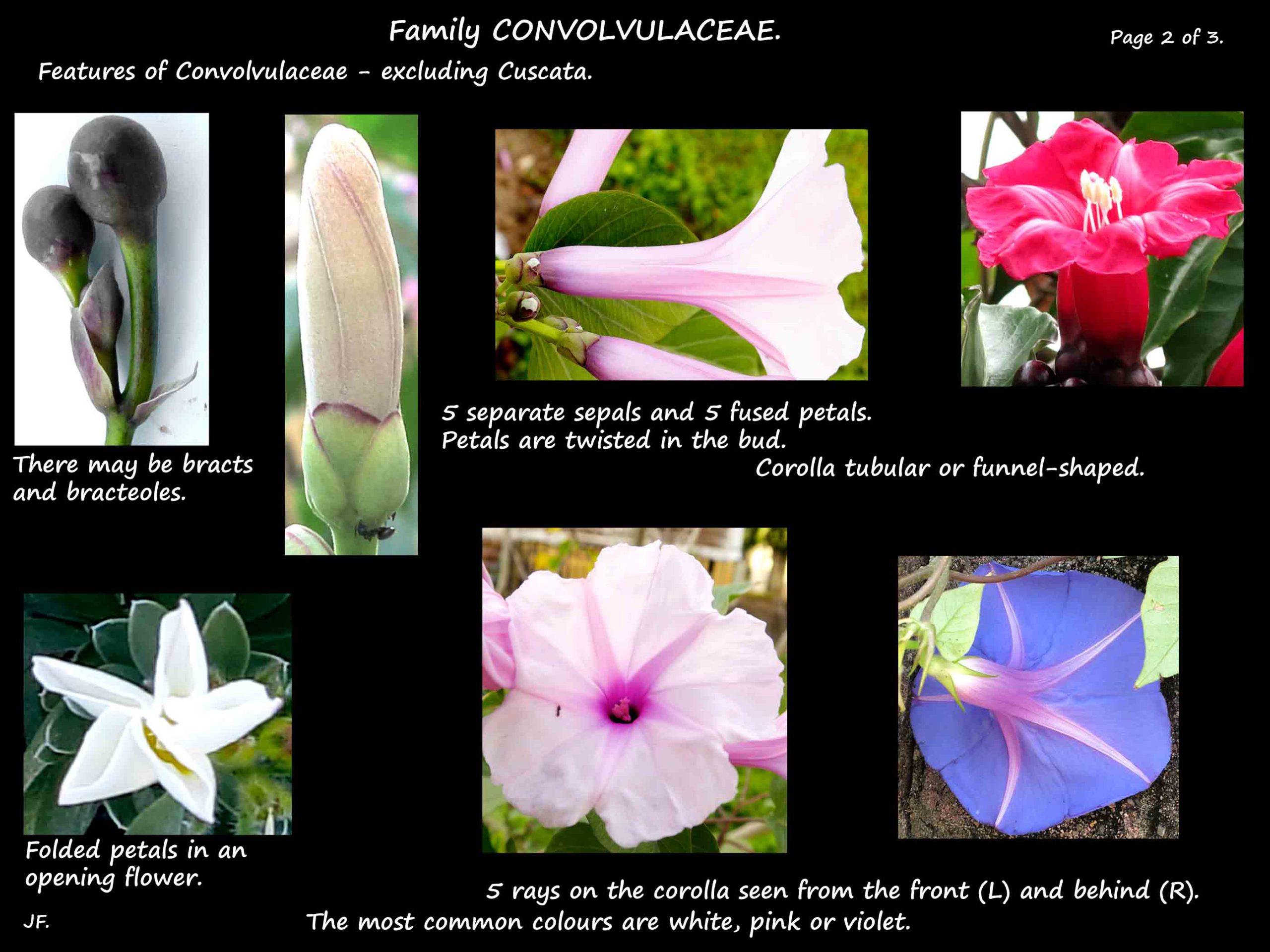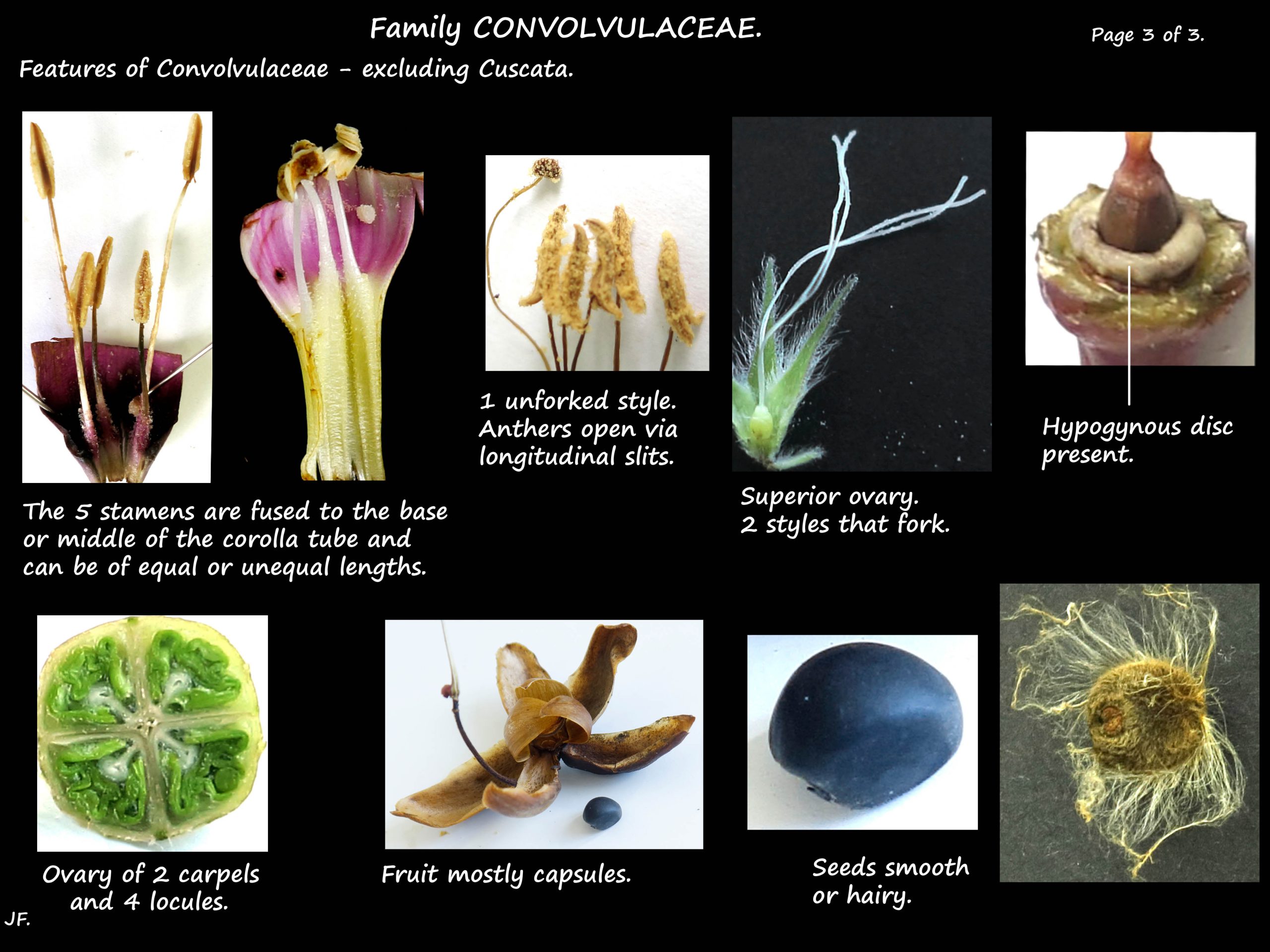Convolvulaceae.
The morning glory or bind-weed family has about 55 to 60 genera and up to 1850 species.
Common genera include Argyreia, Calystegia, Convolvulus, Evolvulus, Ipomoea and Merremia.
It can be divided into 10 tribes including Convolvuleae (Convolvulus and Polymeria), Cuscuteae
(Cuscuta only), Ipomoeeae (Ipomoea only) and Merremieae with Merremia and 9 other genera.
Most are climbing or trailing herbs with some shrubs, lianas (woody vines) and a few trees.
Vines always twine to the right.
They can be annual or perennial and most have a milky sap.
The alternately arranged leaves are in a spiral.
Most have petioles but there are no stipules.
The leaves are usually simple but some are lobed or dissected and may appear compound.
Stomata are present as are hairs that are often branched.
Venation can be pinnate or palmate.
Inflorescences are mostly a single, axillary flower but may be terminal or a cluster.
There may be a pair of variously sized and shaped bracts and sometimes there are bracteoles.
Some species have enlarged bracts.
Most species have flowers on pedicels and these may become coiled or thickened.
The medium to large flowers are mostly bisexual and usually regular in shape.
They commonly have a hypogynous or nectiferous disc usually as a ring that can be a bright colour.
Flowers do not last more than a day.
The perianth has 2 whorls of 5 sepals and 5 petals.
The sepals are separate and mostly of equal size.
They may be persistent in the fruit.
The 5 petals are fused into a tube or a funnel or bell-shaped shaped corolla.
The lobes are usually small.
Petals are usually folded or plaited in the bud.
Colours are most commonly pink, violet or white but can be blue, red or yellow.
Each petal has a thick band or crease that may be brighter or hairy.
The 5 separate stamens are fused to the base (or middle) of the corolla tube.
They alternate with the petal lobes and are often unequal in size.
The anthers dehisce via longitudinal slits either inwards or outwards.
In most species the superior ovary is formed from 2 (to 5) fused carpels with 2 (to 5) locules.
Each locule usually has 2 (1) ovules with basal placentation.
Typically there is a single style that may have a forked end.
There are some species in which the 2 ovaries are separate but their styles are fused.
Styles may arise from the top or base of the ovary.
Style and stigma characteristics are helpful in distinguishing species.
The fruit are mostly a capsule, occasionally a berry or nut.
Capsules can open into the chambers (loculicidal), around the centre or irregularly.
The often shiny black seeds may or may not be hairy.
Unusual members of the family are the parasitic Cuscuta species with leaves absent or reduced to scales.
Convolvulaceae and Solanaceae are the 2 main families in the order Solanales and have many features in common.
Solanaceae flowers have sepals that are fused, in Convolvulaceae they are separate.
J.F.





